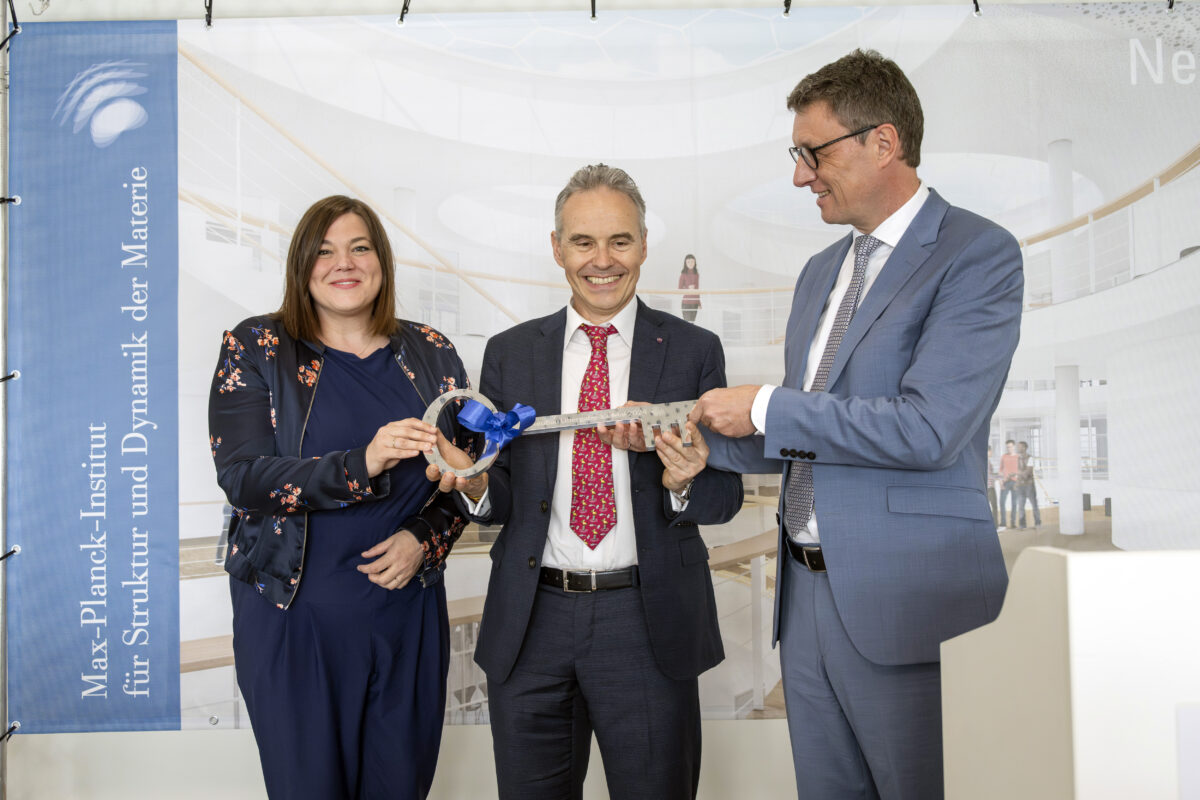New opening for basic research into quantum materials

Handing over the keys with Katharina Fegebank, Prof. Dr. Ángel Rubio and Prof. Dr. Patrick Cramer. Photo: Julia Knop,for MPSD
May 13 marks a milestone for Hamburg’s quantum ecosystem. The new building of the Max Planck Society was officially opened in Science City Nord.
The new building offers space for up to 160 scientists. It houses low-vibration laboratories paired with high air purity for the production of micro- and nanostructures. These samples are used to conduct high-precision experiments at high-power laser sources, extremely strong magnetic fields in the 20 Tesla range or ultra-low temperatures close to absolute zero (-273.15° Celsius). There are also modern, bright offices and large rooms for sharing ideas. The building has an absolute highlight on the roof. The roof garden located there is a great place for scientific exchange or serves as a retreat and source of inspiration.
“This innovative building marks a decisive moment in our efforts to unlock the secrets of quantum materials. Here, within these walls, we will explore the fundamental building blocks of matter, uncover their intricate behaviour and harness their potential to revolutionize technology and materials science.” Managing Director of the MPSD, Ángel Rubio
Science Senator Katharina Fegebank emphasizes how important and good this step is for the Hanseatic city.
“The new building for the Max Planck Institute for the Structure and Dynamics of Matter marks a milestone here in Science City Hamburg Bahrenfeld. In this neighborhood, scientists will find everything they need for their excellent research: optimal laboratory conditions, state-of-the-art technology and a unique infrastructure for collaborations. This mix is the stuff that the future is made of. An important step forward that will make Hamburg even more visible as an international center of knowledge and innovation. I would like to congratulate everyone on the opening and thank all those who have contributed to this great success for our city!”
Growing infrastructure and ecosystem
With the new building, fundamental properties of matter can now be studied and researched even better down to the atomic level. It is also possible to use strong laser pulses to bring materials into new states that do not occur in nature. The building cost a total of 54 million euros. 37 million was financed by the City of Hamburg, with the rest coming from the Max Planck Society.
As HQIC, we are delighted that the ecosystem and infrastructure in Hamburg is constantly growing, as it forms the foundation for further research into all quantum technologies and makes our city internationally attractive for talented researchers.